Starmer & Future of the Right
First rule of politics, learn to count! (Electoral Data Review)
Understanding the Future of the Right and Keir Starmer’s First Year
After fourteen years of Conservative Government, July 2025 marks one full year of Keir Starmer’s Labour Party in power. This milestone has been covered at length by the BBC and various mainstream media outlets: “things look bad — very bad”; “humiliating”; “shambles”; “no story”; “no direction”.
Perhaps all of this is true, but with U-turns on taxation, benefits, winter fuel allowance, WASPI women, farmers, the rape gangs inquiry, the £28bn green investment fund, why does Starmer’s government feel so beleaguered?1
British political culture is now so ‘comms-brained’, it is easy to attribute problems to poor story-telling and framing, but the real issue facing Labour now (and for the next few years) is much deeper: electoral calculus. In the timeless words of Lyndon B. Johnson, “the first rule of politics — learn to count!”
In this electoral data review, we break down:
• Why the 2024 election results condemned Labour for the next four years?
• Does the data bode well for the Conservative, and Reform parties?
• What the direction of multi-cultural Britain poses to further political fragmentation, and the next General Election?
Recent Labour rebellions: the electoral arithmetic
To the unsuspecting eye - after a 411-seat landslide, having 120 Labour MPs threaten to rebel over welfare cuts (in June 2025) is near unprecedented.2 This was twice the size of Rishi Sunak’s largest rebellion — where 57 Tory MPs voted against his flagship Tobacco and Vaping Bill.3
On closer inspection, the much vaunted Labour majority is a paper tiger. Following July 2024, 123 Labour seats -30% of the party- have vote shares under 40%, see Exhibit 1.
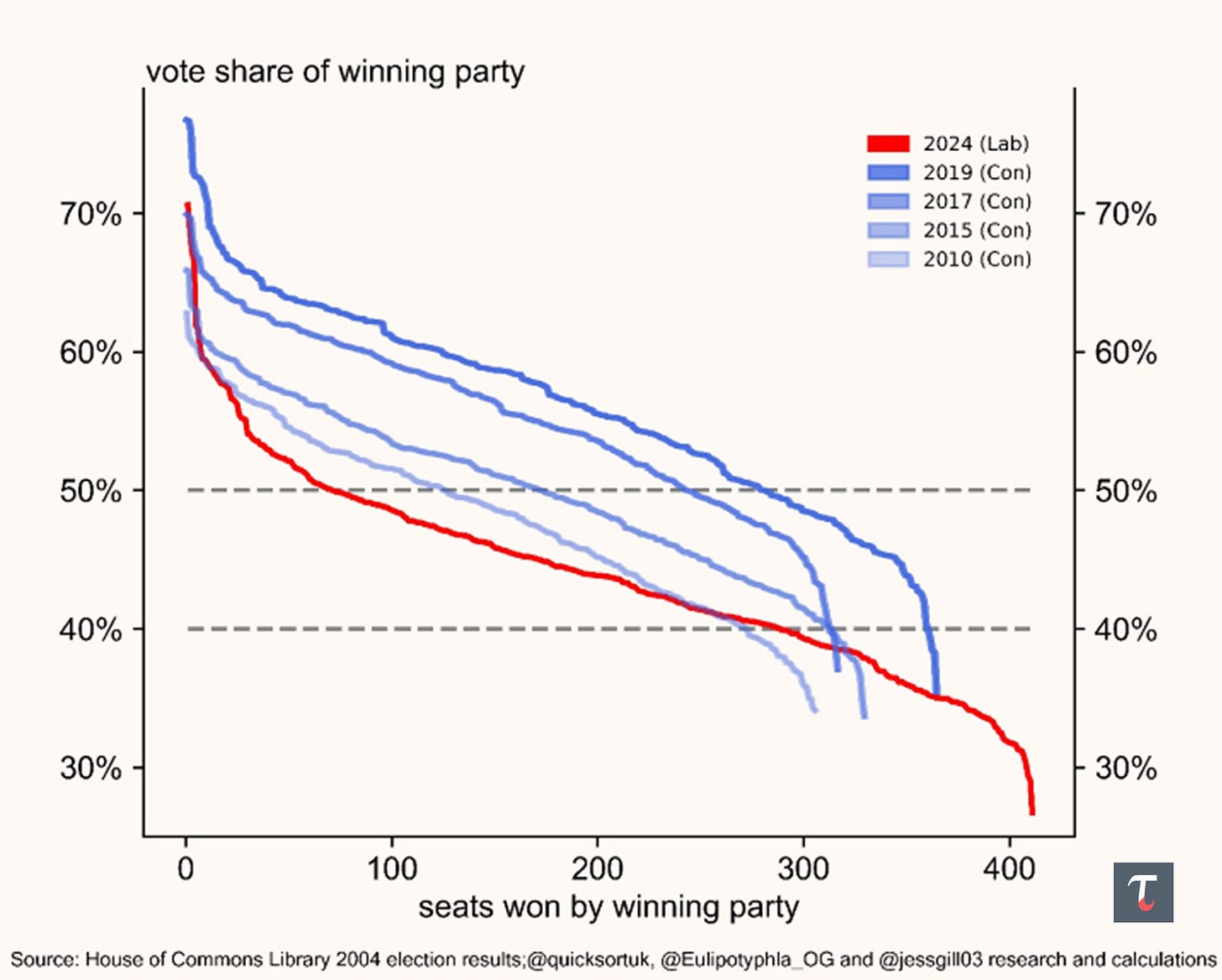
Any MP elected by just one third of their constituents (or thereabouts) will feel very insecure about re-election, prioritise surviving locally, and be prone to rebelling. In that regard, Starmer has a very difficult parliamentary arithmetic, comparable to David Cameron’s Coalition.
Alongside the ‘under 40%’ metric, the number of seats with a vote share over 50% is also an important indicator of a governing party’s confidence and ability to be courageous. The 50% mark is the tipping point for which opposition tactical voting mathematically poses no threat to a MP’s re-election (provided no-to-minimal swing). Under this definition of a ‘safe seat’, just 17% of Labour MPs sit in fully safe seats, compared to 40% for David Cameron and 77% for Boris Johnson, see Exhibit 2.
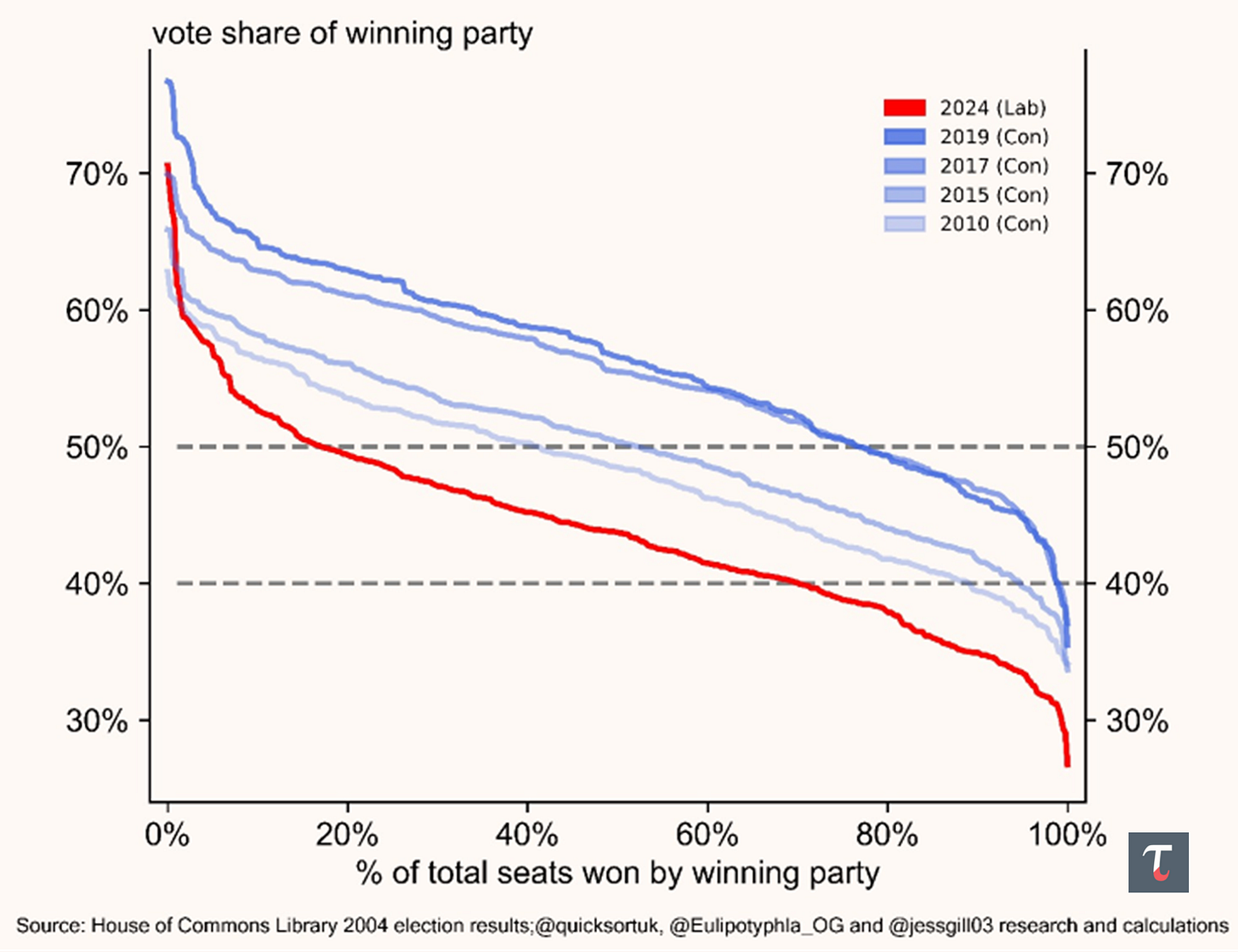
In fact, it is this reason that even in the last embers of the Rishi Government that there were so few rebellions, because hundreds of MPs would have convinced themselves that they might survive.
Labour faces an unenviable position, the worst electoral arithmetic of the past five governments. This can not be fixed with ‘better comms and storytelling’, the numbers dictate that the Government will face more rebellions, and show even less political courage (i.e. more U-turns).
Exhibit 3 presents a comparison of the over 50% and under 40% metrics for the winning party across the past fifteen years. Understanding Labour’s fundamental weakness is the first step for the opposition parties to work together, and target the Government’s pressure points.
For any interested readers: Lee Anderson, who defected from Tory to Reform was one of the five 2019 Tory seats with a vote share under 40%, whilst Christian Wakeford who defected to Labour was in the bottom 15 of lowest vote share Tory MPs. Principles may be one thing, but our politicians’ courage (or lack of) is ultimately driven by numbers and being able to count — the only real facts on the ground.
What does the data say about the Tory Party?
In danger of cliches, the Tory Party is on a precipice. On one hand, with one more nudge, it faces certain death; on the other hand, its in-built historic nationwide appeal means that it is only down, but not out. This is bourn out in the data.
Of the 121 seats won by the Tory Party in 2024, 80 seats have a majority under 5,000, see Exhibit 4. Polling throughout the first 6 months of 2025 suggests that the Party could sink further - at risk from both the Liberal Democrats across the south-west, and Reform across the Midlands and the north-east. Despite Labour’s very challenging electoral calculus, the spread of the Tory seats’ majorities are even worse. In the best case scenario, it will take several election cycles to get back on a stable footing, let alone ever reassembling the vast coalition that came together behind the Party in 2019.
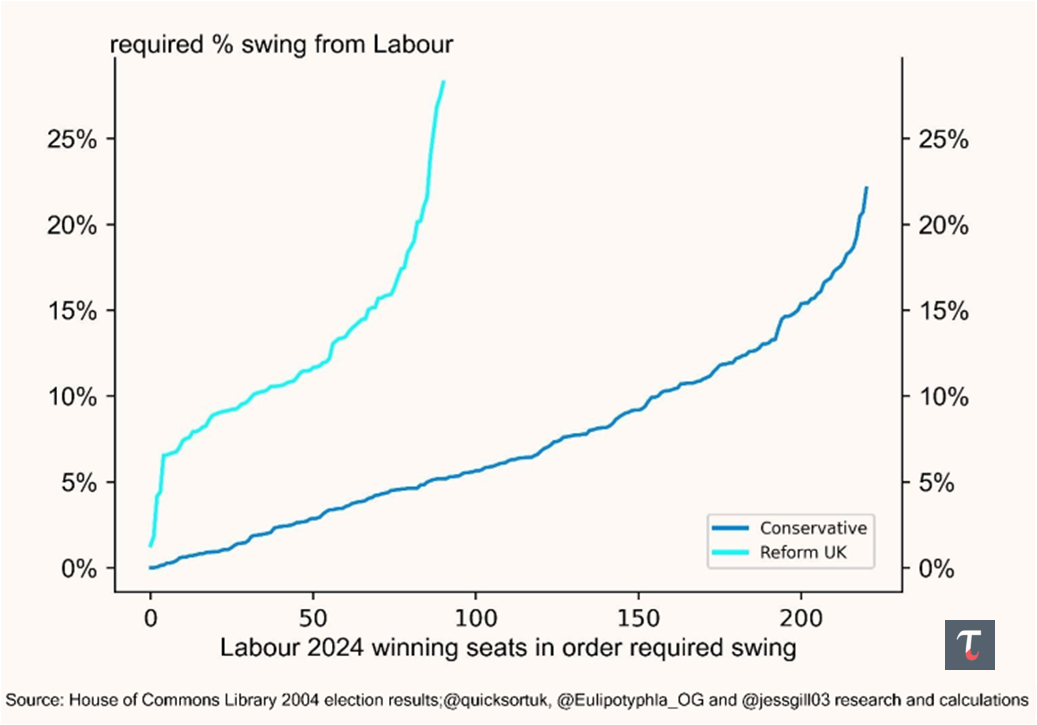
Whilst the Tory Party’s prospects look dire, the betting man would not rule out its prospects. A uniform 5% swing from Labour to Tory would gain the Tories 80-90 seats; whilst a 10% swing would gain the Party 150-160 seats, see Exhibit 5. In the absence of Reform, neither of those two targets would be particularly impossible to achieve, especially given the backdrop of a very unpopular Labour Government.
In fact, although the Conservative seats held in 2024 look very precarious, the Tory vote is still substantial in the many seats where it came second, see Exhibit 6. If the Party stabilises and its prospects improve, it could still be viewed as the most credible opposition party in many parts of the country, by the time of the next General Election.
Beyond this double-edged data, the survival or death of the Tory Party hinges on whether the public believes that the Party is capable of learning from and fixing their mistakes? Will they ever regain the trust it squandered post-2019?
What does the data say about Reform UK?
In seats where Reform come second to Labour, Reform’s prospects are less promising than the Tories in the same position. A 15 to 20% swing from Labour to Reform would deliver between 70 to 90 more seats for Reform at the next general election, see Figure 5. Looking at this metric alone, Reform face a much higher hurdle.
Assessing all the second placed parties, Reform have much further to travel, compared to Labour, the Tories, and even the Liberal Democrats, see Figure 7.
The twist, of course, is that Britain is no longer in a two-party system; there will likely at least five parties polling above 10% in the run up to the next General Election. Unlike the Tories (whose recovery largely depends on gaining a 5 to 15% swing from Labour), if current polling holds, Reform’s path to success hinges on achieving substantial swings against both Labour and the Tories — mainly the latter.
We assess that whilst the Tory Party are down, they are not out. A decent Reform plurality can only be delivered, if the Tories fall from 25% (2024) to sub-16% at the next General Election. The alternative will be a deeply hung Parliament.
Further fragmentation on Left
The prospect of Right-wing vote splitting is not the only political outcome on the cards. Whilst the Conservative Party’s monopoly over the Right appears to be fraying, the British Left look set to become even more divided.
One year on from Starmer’s landslide victory (04-Jul-2025), Zarah Sultana (MP for Coventry South) announced a new left-wing Party to be co-lead by herself and Jeremy Corbyn (former Labour Party leader).4 Although yet to launch and mired in conflicting briefings, the idea is not to be sniffed at.
As the Democrat nominee Zohran Mamdani has shown in New York, there is huge appetite on the Western Left for insurgents — campaigning on a Gaza x LGBTQ ticket. As counter-intuitive as it may seem, Momentum and its 2017-19 sway over the Labour Party, is -at the very least- a proof of concept to its popularity. This is also evident in the polling.
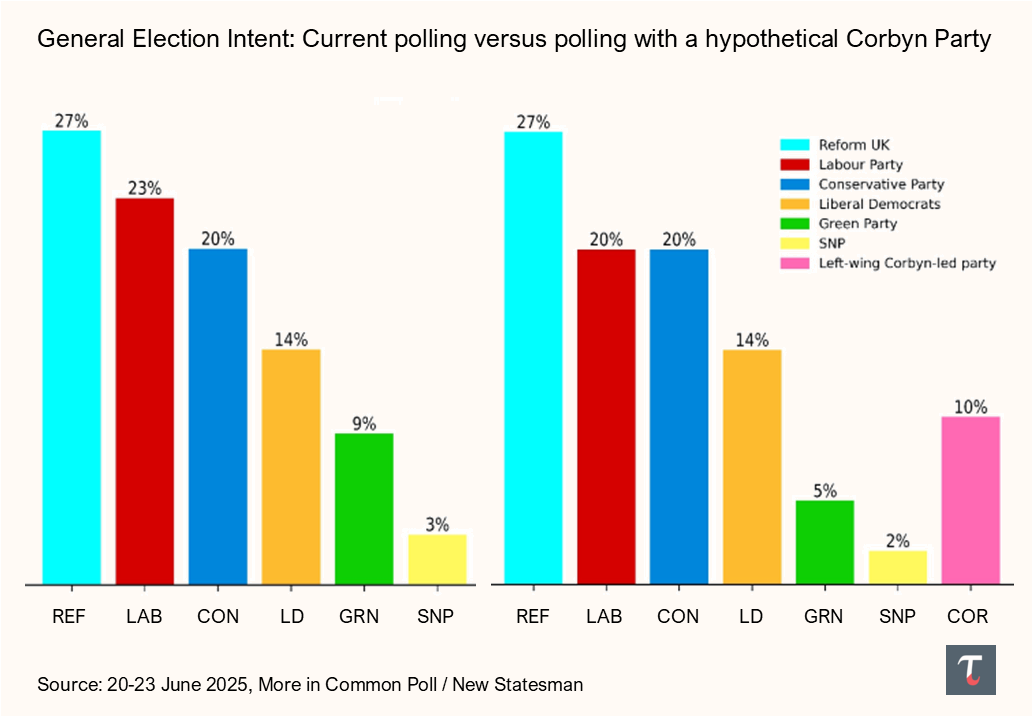
Even a month before Sultana’s announcement, More in Common found that a tenth of electorate would vote for a hypothetical Corbyn-led Party, see Figure 8. Since then, YouGov has found 18% of the public would consider voting for a Corbyn-led Party. This base primarily draws from existing Green, Labour, and Liberal Democrat voters, see Figure 9. Although this is no guarantee for electoral success, it shows the broad appeal for an insurgent Left of centre alternative to the Labour Party, even before any real organising or campaigning has started.

We began to see cracks in Labour’s broad church coalition in the 2024 General Election results. Assessing the winning margins of Labour’s 411 seats, its margins actually fall where the Muslim population increases, see Figure 10. Be it the Green Party, the four ’Gaza’ Independents, or Corbyn, there is clearly space for a serious Left-wing alternative.
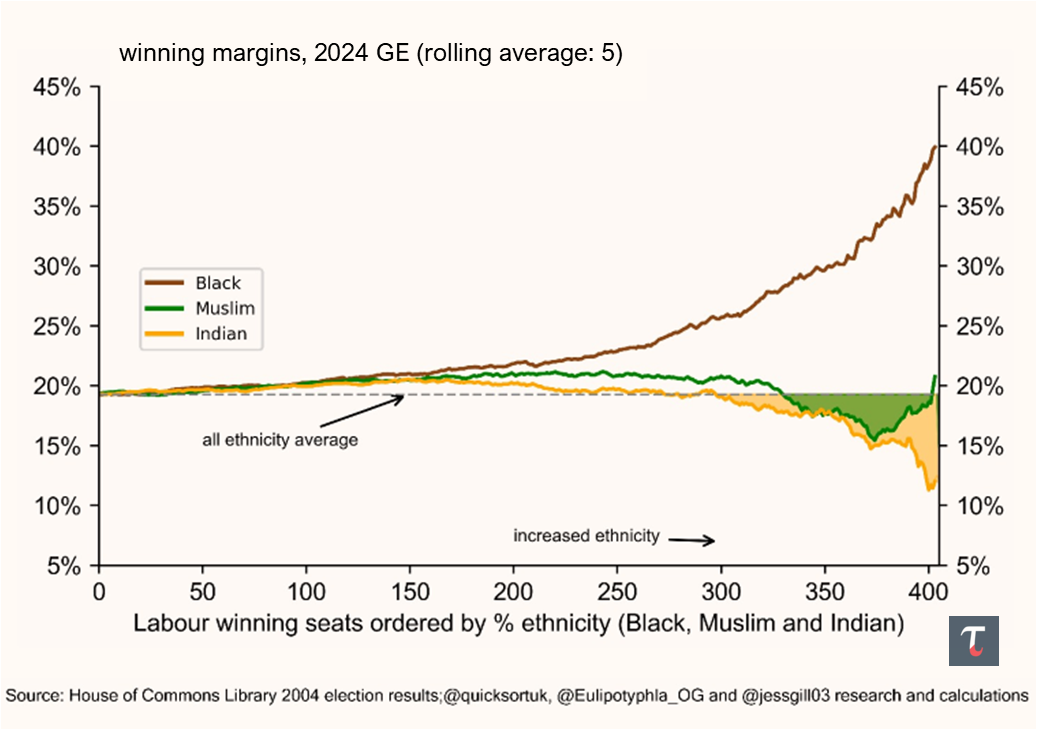
Modelling tactical voting
The polling, see Figure 9, also highlighted that half of 2024 Tory voters would be open to voting for Reform, whilst 27% of Reform voters would consider the Tories at the next General Election. We model a few tactical voting scenarios, assuming that second-placed Tory or Reform candidates manage to gain the same swing from the third-placed parties as much as the first-placed party.
In our first scenario, we consider all seats where Labour came first, with Reform second and a range of third-placed parties, see Exhibit 11. There are roughly 75 seats for which a 15% swing from both Labour and the third-placed parties would give Reform the win. In the majority (56) of these seats, the Tories came third; these voters would have more to gain voting Reform. Geographically, these are seats in Essex, the old Red Wall in the North of England), and the South Wales Valleys, see Exhibit 12.
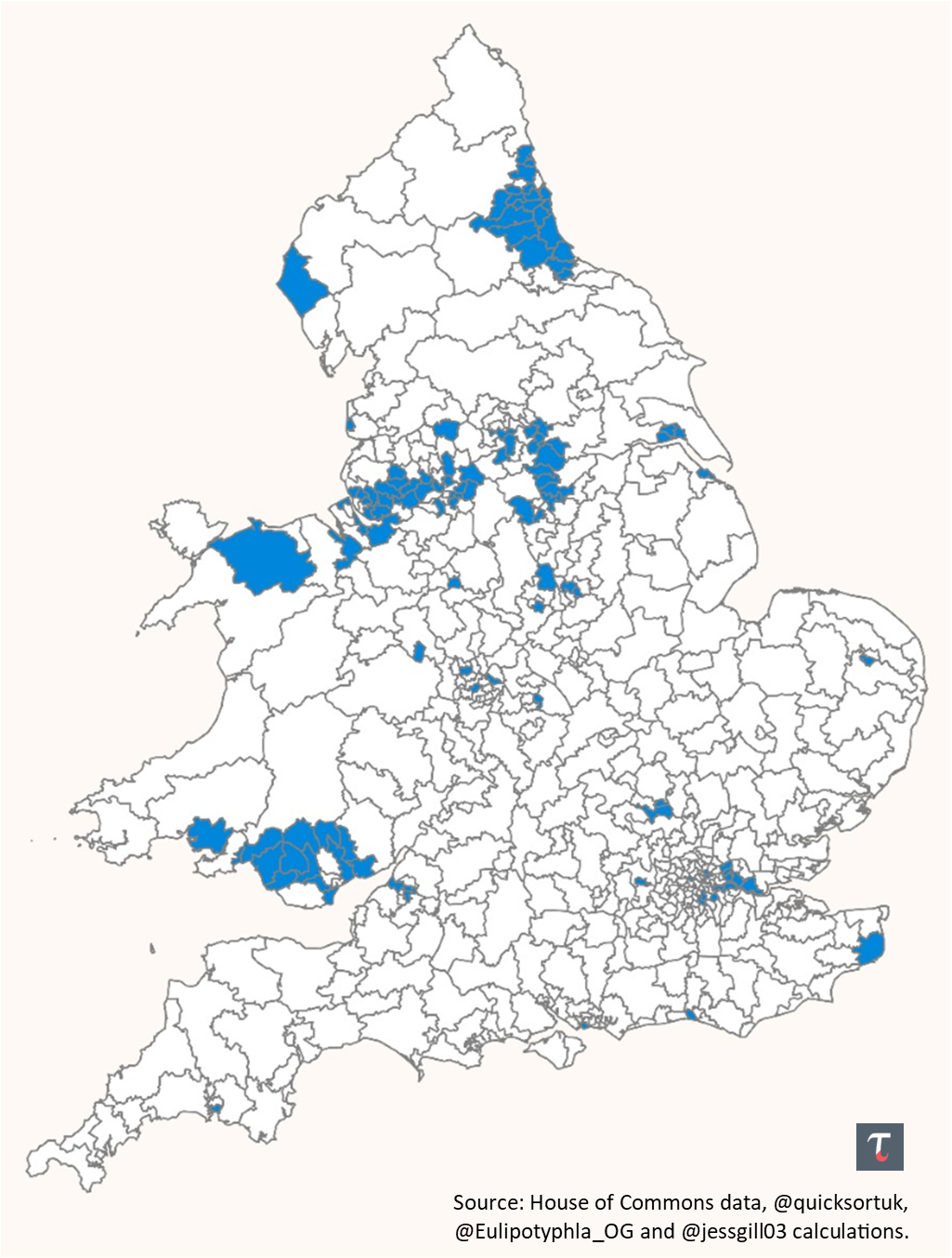
In the second scenario, we consider all seats where the Lib Dems came first, with the Tories in second and a range of third-placed parties, see Exhibit 13.
There are 37 seats where a 15% swing from both the Lib Dems and the third party would give the Tories the win. In the majority (24) of cases, there are seats where Reform came third. Broadly, these seats are in Cambridgeshire, and the rural South West (Devon, Somerset, Wiltshire & Oxfordshire), see Exhibit 14.
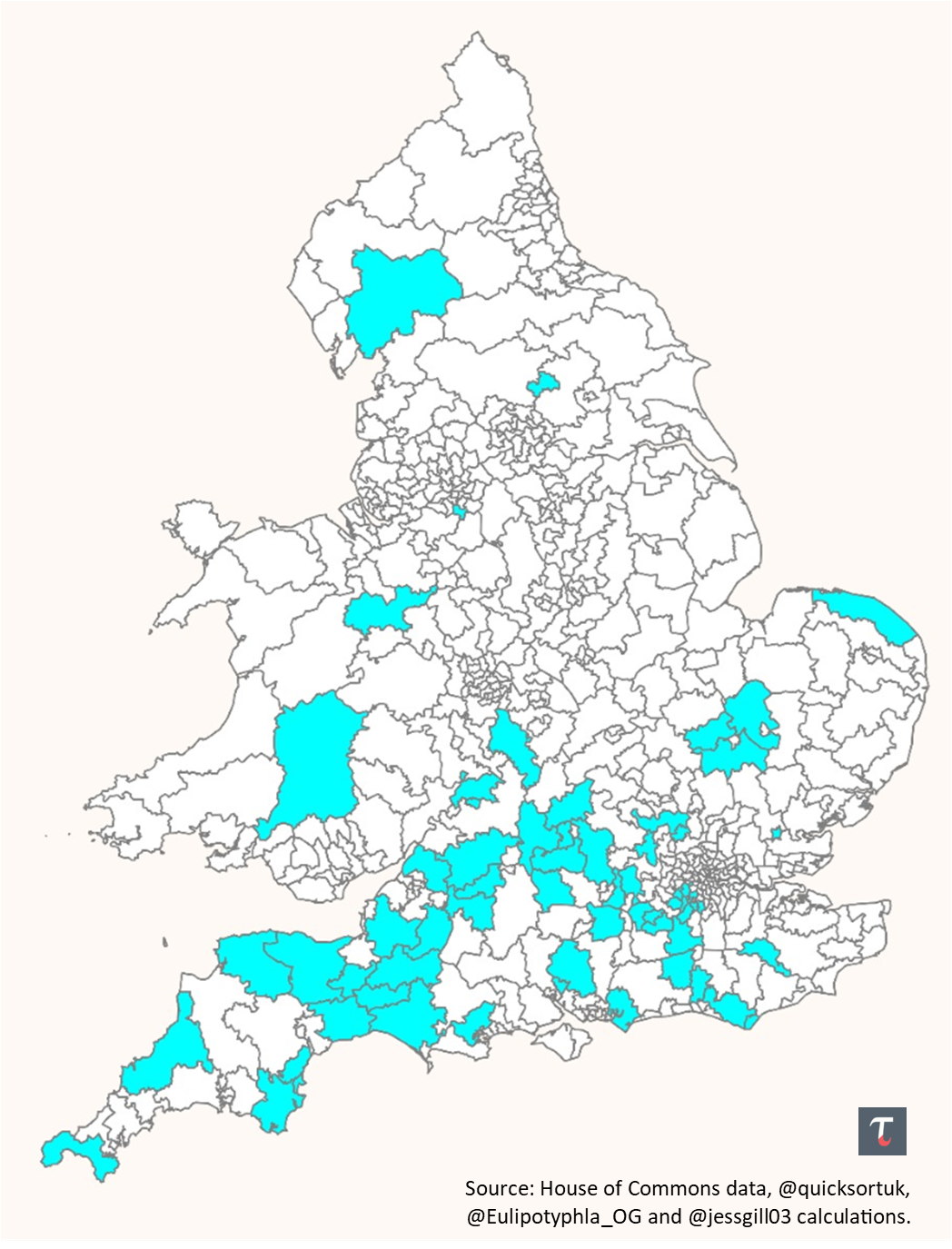
It may interest or amuse readers: In May 2025, the former MP for North East Somerset, Jacob Rees Mogg called for a Reform-Tory pact.5 Keen observers are expecting a by-election there soon, due to the new MP being arrested on suspicion of sexual offences. With the above in mind, Rees Mogg knows his political return hinges a formal or tacit pact.
Six Parties under First-Past-the-Post
One year from Keir Starmer’s landslide, the recent national polling tells a blurred story. Whilst a 2-5% variation between pollsters seems minute, with six credible parliamentary parties in a first-post-the-post electoral system, the outcome for the next general election is far from certain.
Using July data from YouGov and Find Out Now, and the Electoral Calculus seat model, we find that although a Reform plurality is predicted, the outcome (a difference of 2-5%) could range from being 46 seats short of a majority, to commanding a 90-seat majority, see Exhibits 15 and 16.
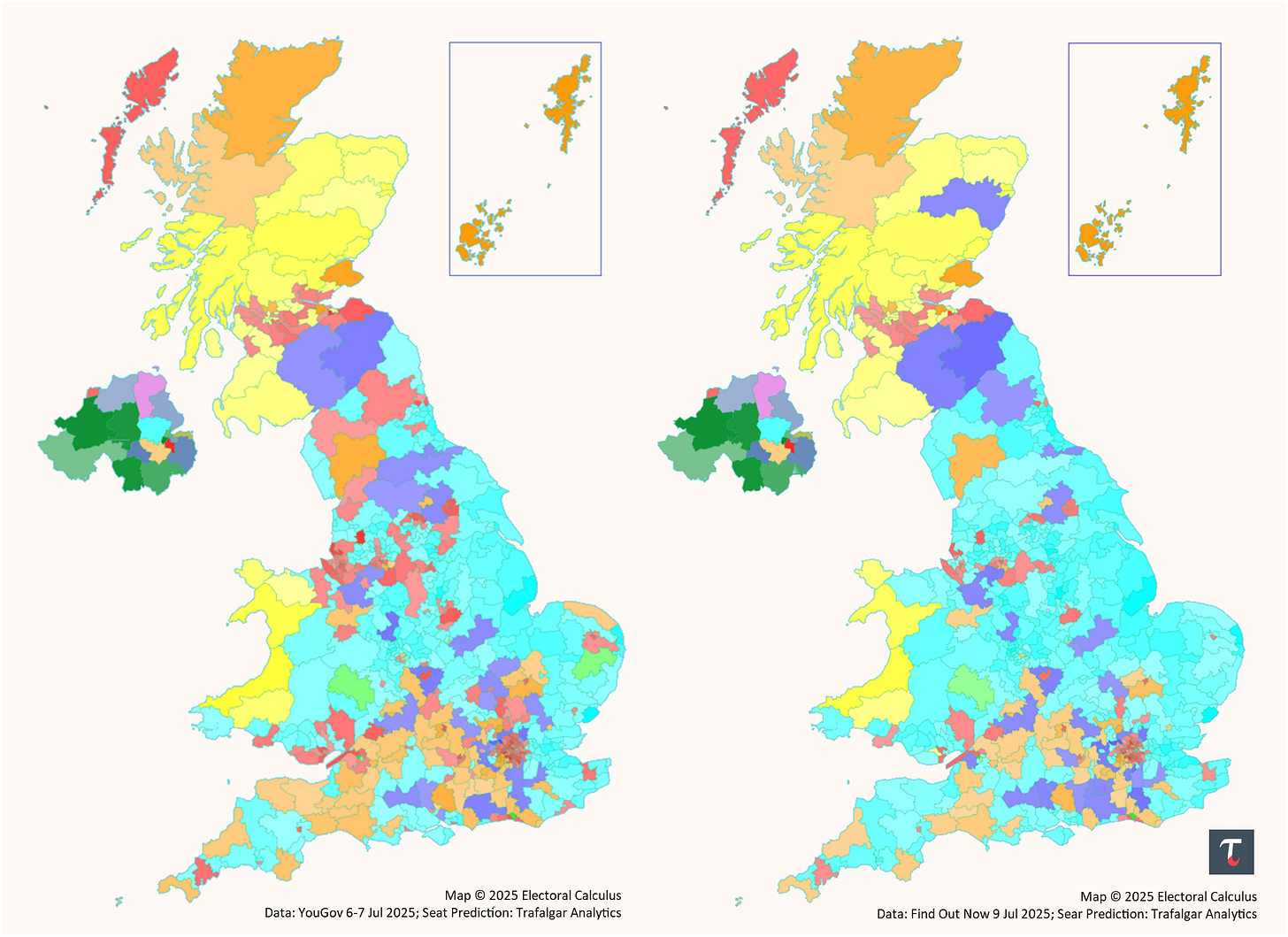
As to our assessment of Starmer’s first year, the electoral arithmetic is stacked against Labour. They are not likely to recover their polling lead or re-control the national narrative; in fact, it could get worse if the Greens and a future Corbyn-led party outmanoeuvre them over time. But, whether it is Reform or the Tories who come out top, is still all to play for.
If you enjoyed this paper, feel free to like and share. For further work on this, and other subjects, follow Trafalgar Analytics on Twitter / Substack.
—
@Eulipotyphla_OG, @jessgill03 and @quicksortuk,
Trafalgar Analytics, 13th July 2025.
Trafalgar Analytics is Britain’s pioneering data analytics and research unit. We focus on the discovery, interpretation, and communication of meaningful patterns in data. We believe in a data driven approach to tackling the foremost societal, economic, and political challenges of our time.
If you are interested in supporting, collaborating, or working with us, do not hesitate to get in touch: trafalgaranalytics@protonmail.com
References
Mitchell, A. (2025). Every Labour U-turn after Starmer reverses welfare cuts. [online] The Independent. Available at: https://www.independent.co.uk/news/uk/politics/starmer-u-turn-labour-welfare-cuts-welfare-reform-winter-fuel-b2782114.html.
Green, D. (2025). Welfare reform bill: Full text of reasoned amendment and list of rebel Labour MPs - LabourList. [online] LabourList. Available at: https://labourlist.org/2025/06/welfare-reform-bill-reasoned-amendment-my-mp-how-vote/.
Courea, E. (2024). Tory rebellion against Sunak smoking ban rekindles leadership talk. [online] the Guardian. Available at: https://www.theguardian.com/politics/2024/apr/16/tory-rebellion-against-sunak-smoking-ban-rekindles-leadership-talk [Accessed 13 Jul. 2025].
Bloch, B. (2025). MP Zarah Sultana who was ousted from Labour announces new party with Jeremy Corbyn - but he says ‘discussions ongoing’. [online] Sky News. Available at: https://news.sky.com/story/mp-zarah-sultana-who-was-ousted-from-labour-announces-she-is-starting-new-political-party-with-jeremy-corbyn-13392103 [Accessed 13 Jul. 2025].
BBC Newsnight (2025). Rees-Mogg: time for a Tory-Reform pact. [online] Available at: https://www.bbc.co.uk/iplayer/episode/m002ccv0/newsnight-reesmogg-time-for-a-toryreform-pact [Accessed 13 Jul. 2025].


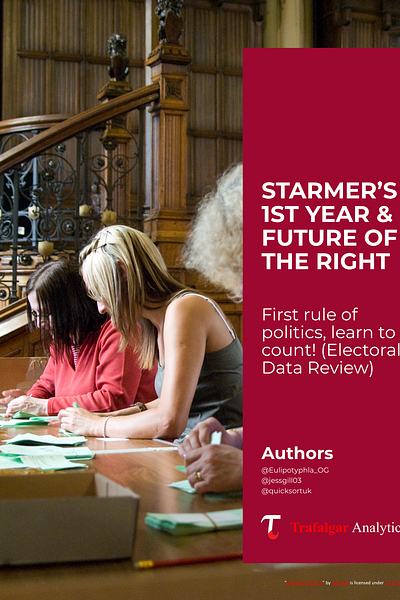
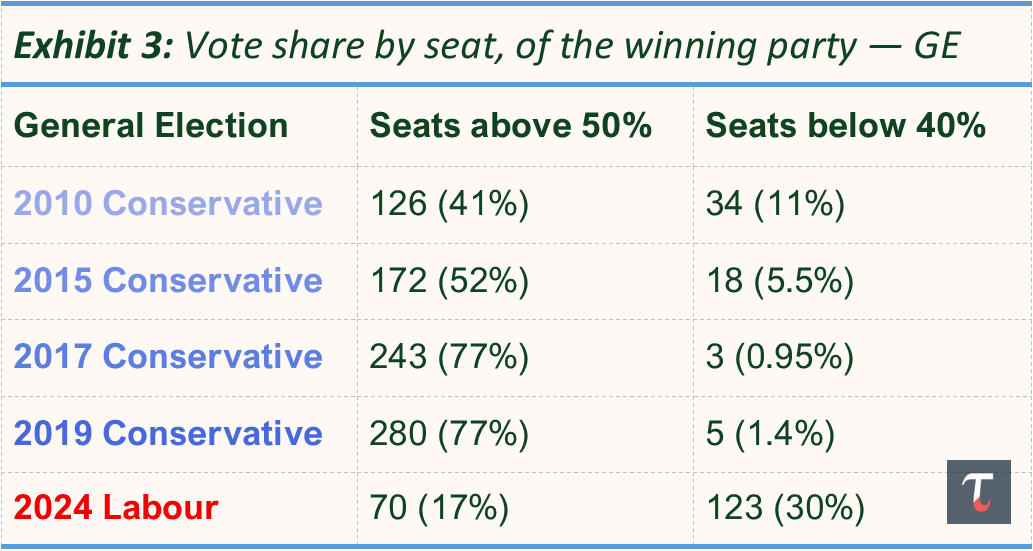
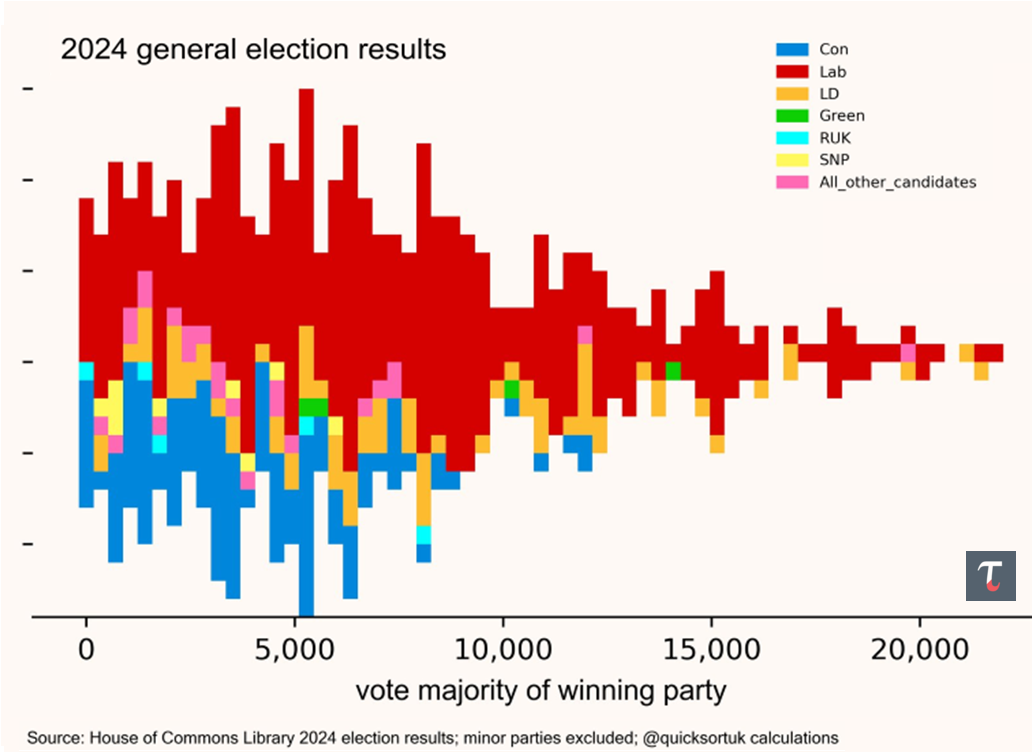
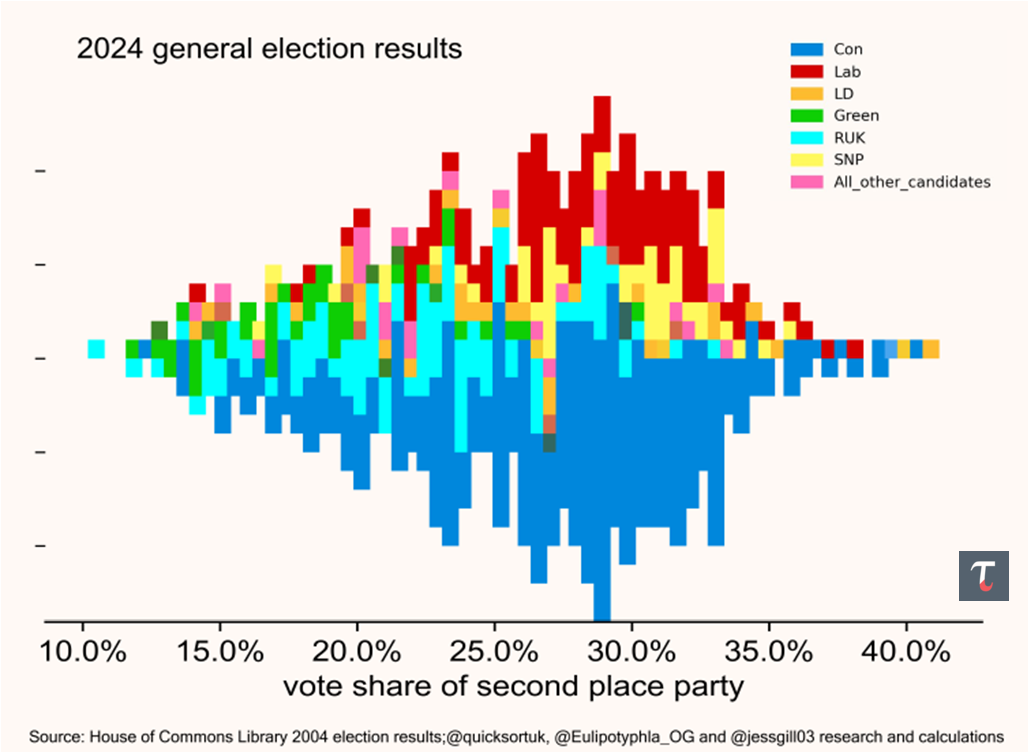
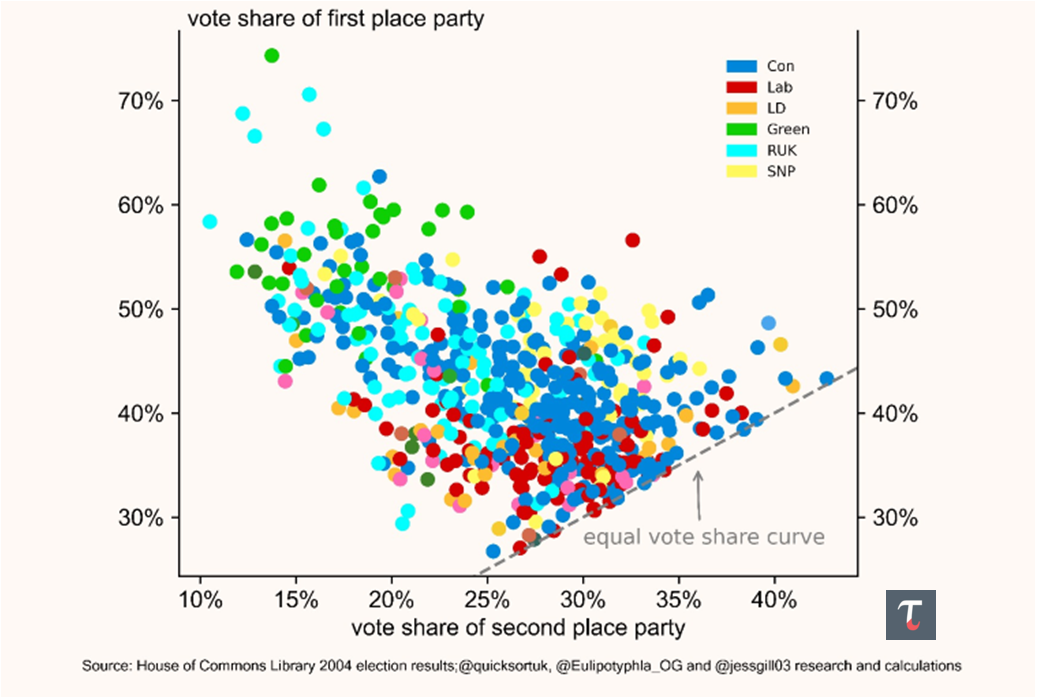
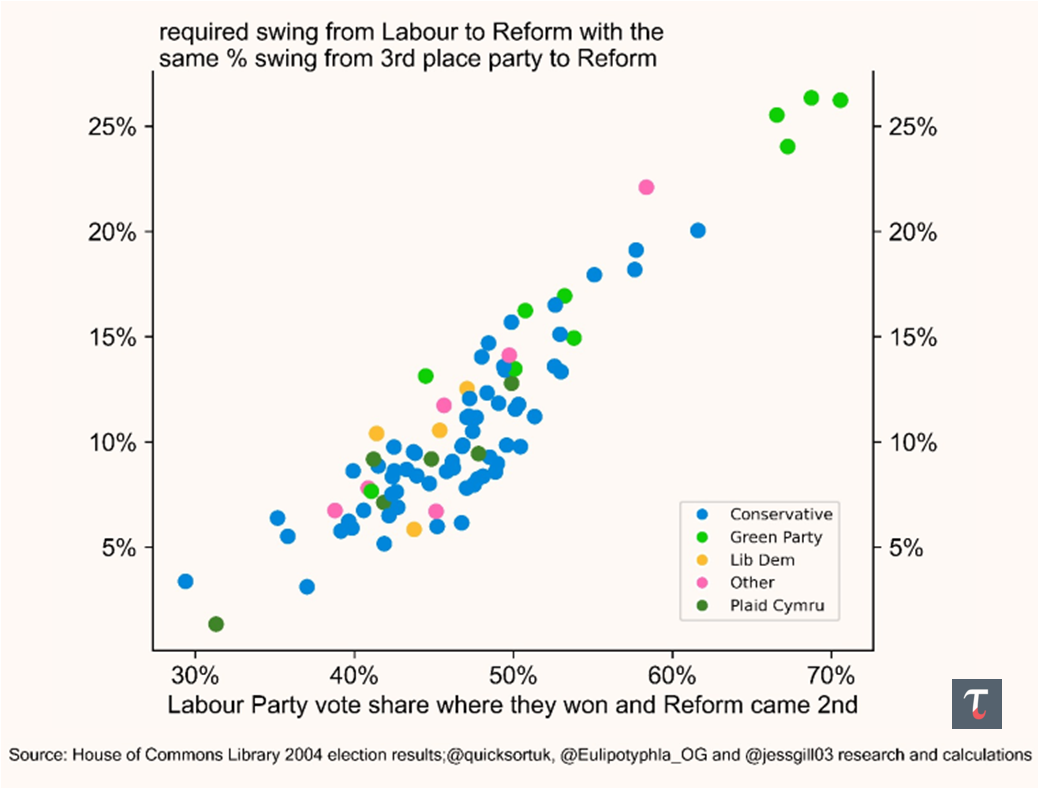
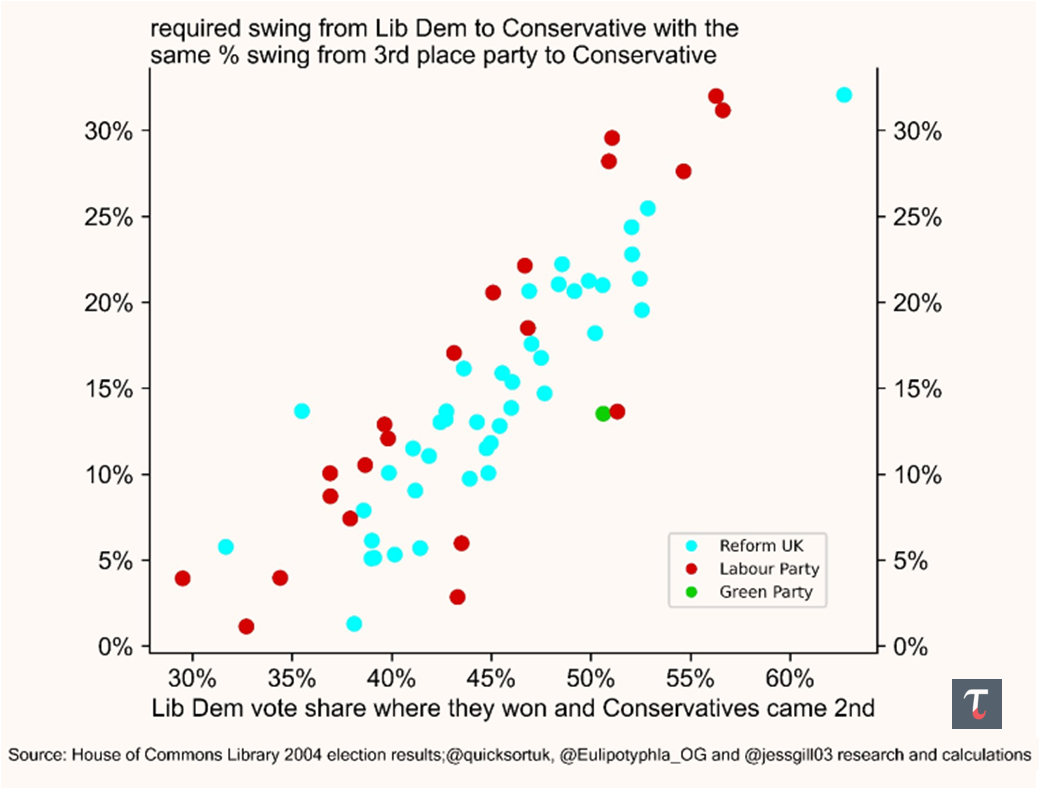
Fantastic analysis.